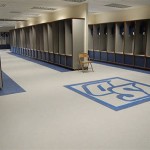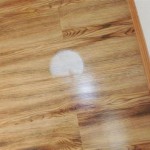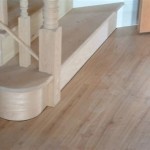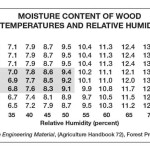Disadvantages of Granite Flooring
Granite, a naturally occurring igneous rock, is a popular choice for flooring in both residential and commercial settings. Its durability, aesthetic appeal, and resistance to staining when properly sealed make it an attractive option for many. However, despite its numerous advantages, granite flooring also presents several potential drawbacks that should be carefully considered before making a final decision. These disadvantages range from cost and installation complexities to maintenance requirements and inherent material properties.
Understanding these disadvantages is crucial for ensuring that granite flooring aligns with the specific needs and constraints of any project. Ignoring these potential pitfalls can lead to dissatisfaction, unexpected expenses, and ultimately, a flooring solution that doesn't meet expectations. This article will delve into the various disadvantages of granite flooring, providing a comprehensive overview to assist in informed decision-making.
High Installation and Material Costs
One of the most significant deterrents for many prospective buyers is the high cost associated with granite flooring. The initial expense encompasses both the material itself and the professional installation required. Granite slabs and tiles are generally more expensive than other common flooring materials, such as ceramic tile, vinyl, or laminate. This premium price reflects the complexities involved in quarrying, processing, and transporting the heavy stone.
The cost of granite varies depending on several factors, including the origin of the stone, its rarity, color, and veining patterns. Exotic or uniquely patterned granite slabs command a higher price. Furthermore, the size and thickness of the granite tiles also impact the overall cost. Larger tiles often require less grout but are more prone to cracking during installation if not handled carefully.
Beyond the material cost, professional installation is almost always recommended for granite flooring. Due to the weight and density of granite, specialized tools and expertise are necessary to ensure proper installation and a level surface. The installer must have experience in laying granite, understanding the correct mortar mix, and utilizing appropriate cutting and leveling techniques. This specialized labor adds significantly to the overall expense of the flooring project. Attempting a DIY installation without adequate knowledge and tools can lead to costly mistakes and compromised structural integrity.
Furthermore, the subfloor preparation can also contribute to the overall price. Granite requires a perfectly level and stable subfloor to prevent cracking or shifting over time. If the existing subfloor is uneven or inadequate, additional preparation, such as leveling compounds or reinforcement, may be necessary, further increasing the project's financial burden.
Transportation costs are also a factor to consider. Granite is a heavy material, and transporting it from the supplier to the installation site can be expensive, especially for long distances or difficult-to-access locations. These added transportation costs can significantly impact the overall budget, particularly for larger projects.
In summary, the combined costs of the granite material, professional installation, subfloor preparation, and transportation make granite flooring a substantial investment. Prospective buyers should carefully evaluate their budget and explore alternative flooring options if cost is a primary concern.
Maintenance Requirements and Porosity
While granite is known for its durability, it is not entirely maintenance-free. Granite is a porous material, meaning it can absorb liquids if not properly sealed. This porosity makes it susceptible to staining from spills like wine, oil, juice, and even water if left standing for extended periods.
To mitigate the risk of staining, granite flooring requires regular sealing. Sealant acts as a protective barrier, preventing liquids from penetrating the stone's surface. The frequency of sealing depends on the type of sealant used and the level of traffic the floor experiences. Typically, granite floors should be resealed every one to two years. Neglecting to reseal the floor can result in unsightly stains that are difficult or impossible to remove.
In addition to sealing, regular cleaning is also crucial for maintaining the appearance of granite floors. While granite is resistant to scratches, abrasive cleaners and harsh chemicals can damage the sealant and dull the surface over time. It is recommended to use pH-neutral cleaners specifically designed for stone floors. Avoid using acidic cleaners, such as vinegar or lemon juice, as they can etch the surface of the granite.
Sweeping or vacuuming regularly is essential to remove dirt and debris that can scratch the surface of the granite. Grit and sand can act as abrasives, causing microscopic scratches that accumulate over time and leave the floor looking dull and worn. Using a soft-bristle broom or a vacuum cleaner with a soft brush attachment can help prevent these scratches.
Another maintenance concern is the potential for grout discoloration. Grout lines between granite tiles are susceptible to staining and mildew growth. Regular cleaning with a grout brush and a suitable grout cleaner is necessary to maintain their appearance. Applying a grout sealant can also help prevent stains and mildew from penetrating the grout lines.
Furthermore, granite is susceptible to etching from acidic substances. Even sealed granite can be damaged by prolonged exposure to acids. Immediate cleanup of spills is crucial to prevent etching. While etching may not be immediately visible, it can gradually dull the surface of the granite over time, requiring professional polishing to restore its original luster.
Therefore, while granite is a durable material, its maintenance requirements should not be underestimated. Regular sealing, cleaning with appropriate products, and prompt spill cleanup are essential for preserving the beauty and longevity of granite flooring. Failure to properly maintain granite can lead to staining, etching, and a dull, worn appearance.
Coldness and Hardness
Granite flooring has a high thermal mass, meaning it absorbs and retains heat slowly. This characteristic can be an advantage in warm climates, as it helps keep the floor cool. However, in colder climates, granite can feel uncomfortably cold underfoot, especially during winter months. This coldness can be a significant drawback for homeowners who prioritize warmth and comfort.
While area rugs can provide some insulation and warmth, covering the entire floor with rugs defeats the purpose of having granite flooring. Underfloor heating systems can be installed to mitigate the coldness, but this adds significantly to the initial cost of the flooring project and increases energy consumption.
Another disadvantage of granite flooring is its inherent hardness. Granite is a dense and unyielding material, which can make it uncomfortable to stand on for extended periods. This hardness can be particularly problematic in areas where people spend a lot of time standing, such as kitchens or laundry rooms. The lack of cushioning can lead to fatigue and discomfort, especially for individuals with joint problems or foot issues.
The hardness of granite can also be a safety concern. Dropped objects, such as dishes or glassware, are more likely to break on a hard granite surface. Additionally, falls on granite flooring can result in more serious injuries compared to falls on softer flooring materials. This is particularly relevant for households with young children or elderly individuals who are at increased risk of falls.
The hardness of granite also affects the acoustical properties of a room. Granite floors tend to reflect sound, creating echoes and increasing the overall noise level. This can be particularly noticeable in large, open spaces. Using area rugs and other soft furnishings can help absorb some of the sound and mitigate the echo effect, but it is important to consider the acoustical implications of granite flooring before making a decision.
In summary, the coldness and hardness of granite flooring can be significant drawbacks, particularly in colder climates or for individuals who prioritize comfort and cushioning. While underfloor heating and area rugs can help mitigate these issues, they add to the overall cost and may not fully address the inherent properties of the material.
Potential for Slippery Surfaces
Depending on the finish applied, granite flooring can become slippery, especially when wet. Polished granite, while aesthetically appealing, tends to have a smooth, glossy surface that offers little traction. This can create a hazardous condition, particularly in areas prone to moisture, such as bathrooms, kitchens, and entryways.
The risk of slipping is increased when the granite floor is wet from spills, rain, or cleaning. Even small amounts of water can significantly reduce the coefficient of friction, making it difficult to maintain a secure footing. This poses a safety risk for all occupants, but especially for children, the elderly, and individuals with mobility issues.
To mitigate the risk of slipping, several measures can be taken. Applying a non-slip coating to the granite surface can increase its traction. These coatings are typically clear and designed to be invisible, but they can wear off over time and require reapplication. Another option is to choose a granite finish with a more textured surface, such as honed or flamed granite. These finishes have a slightly rougher texture that provides better grip, even when wet.
Using area rugs in high-traffic areas and locations prone to moisture can also help prevent slips and falls. Rugs provide a more secure surface to walk on and can absorb spills before they reach the granite floor. However, it is important to choose rugs with non-slip backing to prevent them from sliding on the granite surface.
Maintaining a clean and dry floor is also essential for preventing slips. Promptly cleaning up spills and mopping up any excess water can significantly reduce the risk of accidents. Using doormats at entrances can help prevent dirt and moisture from being tracked onto the granite floor.
The potential for slippery surfaces is a significant safety concern associated with granite flooring. While several measures can be taken to mitigate this risk, it is important to carefully consider the finish of the granite and take proactive steps to maintain a safe walking surface. Polished granite is generally more slippery than honed or flamed granite, and regular cleaning and the use of non-slip coatings or area rugs are essential for preventing accidents.
Limited Design Flexibility
While granite is available in a variety of colors and patterns, its natural characteristics can limit design flexibility compared to other flooring options like tile or vinyl. The veining and patterns in granite are naturally occurring, meaning that there is a degree of inconsistency between slabs. This randomness, while often considered a beautiful feature, can make it challenging to achieve a perfectly uniform or precisely matched look.
Achieving a consistent color or pattern across a large area requires careful selection and matching of granite slabs. This can be a time-consuming and expensive process, as it may involve ordering extra material to ensure a sufficient quantity of matching pieces. Furthermore, even with careful selection, there may still be subtle variations in color and veining that are unavoidable.
The size and shape of granite tiles can also limit design possibilities. Granite is typically available in standard tile sizes, but custom sizes and shapes can be more difficult and costly to obtain. This can restrict the ability to create intricate patterns or unique layouts. In contrast, other flooring materials like ceramic tile or vinyl sheet offer greater flexibility in terms of size, shape, and design.
Another limitation is the relative lack of texture options. While granite can be finished in various ways, such as polished, honed, or flamed, the range of textures is generally more limited compared to other flooring materials. This can impact the overall aesthetic of the space and the tactile experience of walking on the floor.
Furthermore, the thickness of granite can also present challenges in certain applications. Granite tiles are typically thicker than other flooring materials, which can affect floor height and transition details. This may require adjustments to door frames or other architectural elements to accommodate the thicker flooring. The weight of granite also limits its suitability for certain applications, such as upper-story floors in older buildings that may not be able to support the added load.
In summary, while granite offers a timeless and elegant look, its natural characteristics and limitations in size, shape, and texture can restrict design flexibility compared to other flooring options. Achieving a consistent color or pattern requires careful selection and matching, and custom sizes and shapes can be difficult and costly to obtain. These limitations should be carefully considered when evaluating granite flooring for a specific project.

Granite Flooring Advantages And Disadvantages

Granite Flooring Advantages And Disadvantages

Is A Granite Countertop Right For Your Kitchen Maxspace

Advantages And Disadvantages Of Granite Flooring Paetani Buildwell Pvt Ltd Pbpl Blog

Granite Stone Advantages Disadvantages Of

Granite Flooring Advantages And Disadvantages

The Pros And Cons Of Granite Floor Tiles 2025 Today S Homeowner

Granite Flooring Tiles Advantages And Disadvantages

Which Is Better Granite Or Marble Flooring Skytouch

Which Is Better Granite Or Marble Flooring Ceraite
Related Posts








